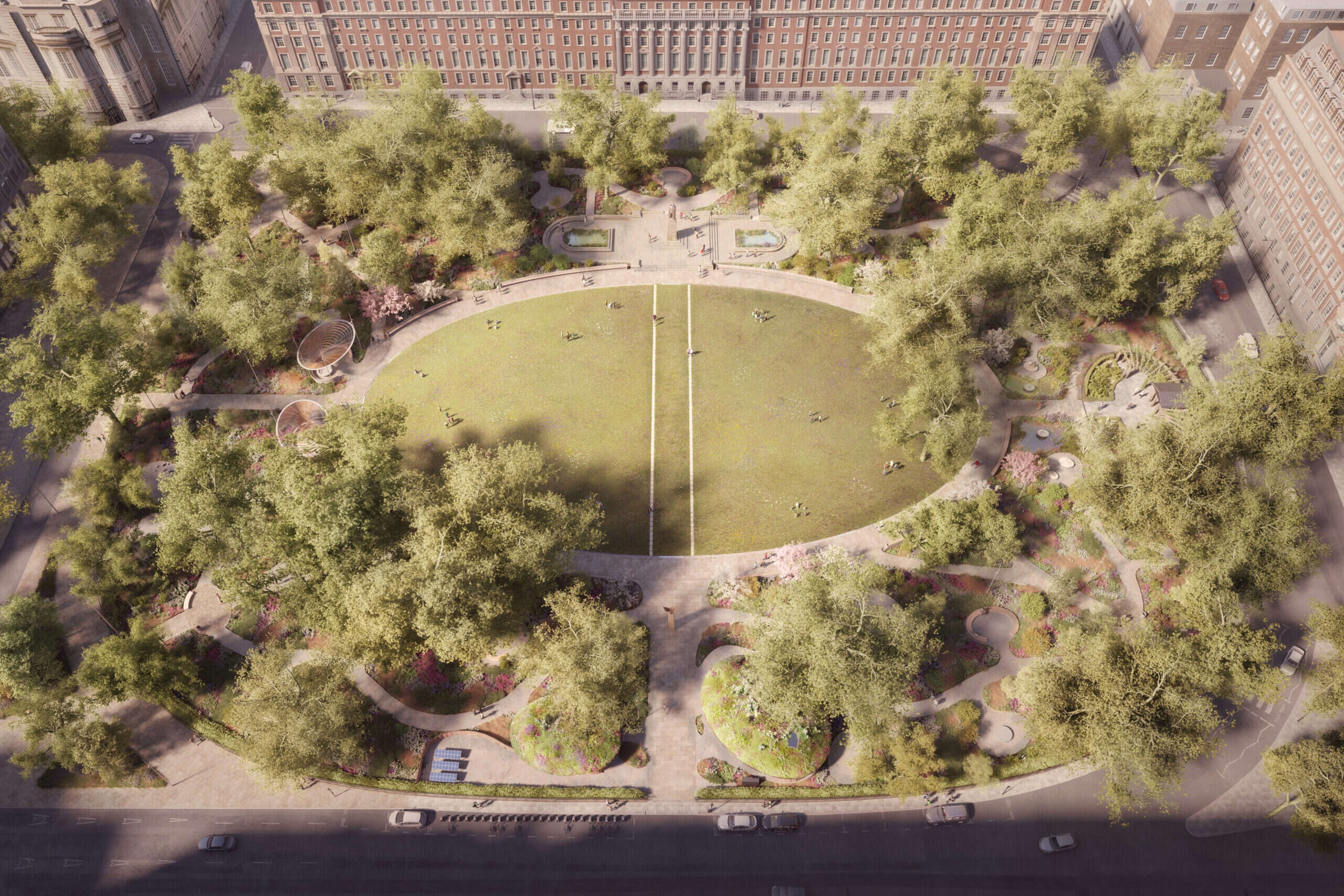
Today, 55% of the world’s population – 4.2 billion people – live in cities. By 2050, it has been estimated that this will rise to seven billion people. While there are many benefits to city living, if planned badly, traffic, concrete and polluted city air can sometimes play a role in harming our mental and physical health.

But it doesn’t have to be that way. Quality green space aids well-being and builds climate resilience; their potential can ensure cities and people can thrive in an era of climate change.
There’s a compelling case for more and better-quality green space in our cities. Mounting evidence suggests that nature can improve quality of life by reducing stress, blood pressure, heart rates and mortality rates. We’ve known about the link between health and nature for many years, but the climate emergency and the pandemic have heightened our need for high-quality green space.
Biodiverstiy at Grosvenor Square
Our strategy at Grosvenor is our commitment to long-standing biodiverse places. It sees us addressing biodiversity loss through creating and managing a wide range of habitat types; providing food and shelter for priority species in locally targeted areas. By investing in living roofs, herbaceous planting and improving wildlife corridors between existing green assets, we’re aiming for a 20% increase in biodiversity in our managed spaces by 2030. For our new developments, we’re aiming for 100%.
Through this strategy, we want to redefine the role of green spaces in our cities. One of our greatest green assets by size is Grosvenor Square, where we’re working to improve quality over quantity.
[Read more: Communities hold the power to create urban green space]
We want Grosvenor Square, a historic 2.5ha garden in the heart of London’s West end, to do more to contribute to the area, the environment, and its community. Today it is a large green expanse limited to grass, a holly hedge perimeter, and a predominance of London plane trees – but that’s about to change.
We recently gained approval for the fourth redesign in Grosvenor Square’s near 300-year history. The reimagined six-acre garden, just off London’s Oxford Street, will celebrate and preserve the square’s historic features and introduce new elements that help the city respond to climate change:
• A shaded garden containing biodiverse planting
• A central open garden reinstating the original 1720s oval design
• Waterfall canopies, wetlands and channels that capture and store rainwater for reuse
• Play spaces and an education building
By injecting more nature into the capital and supporting it to thrive, the space will be capable of delivering futureproofed environmental co-benefits, such as mitigating flood risk and reducing the urban heat island effect. Two dozen more trees will be planted in the square, increasing homes for wildlife and improving air quality. Waterfall canopies will capture and store rainwater, creating rich habitats and acting as a natural support for flooding and drought in the city. The redesign will drive a biodiversity net gain of 15.5% over and above the existing credentials, with a fivefold increase in the number of plant species.
Community projects
As well as addressing the environmental needs of a city, the project is a direct response to what the community asked for – it is a private sector investment in a community-led scheme. This project represents our commitment to continual investment in Westminster. From the beginning our goal was to deliver a new green heart for Mayfair – choosing to invest in, and for, people and the planet.
In extensive collaboration with communities, we are creating a scheme that meets their priorities and can make a major contribution to local well-being, climate resilience and nature.
Between 2020 and 2022, we engaged almost 7,000 people, deploying innovative methods during the pandemic to continue meaningful conversations about what they want to see – an approach recently endorsed by Westminster Council at the launch of its Community Engagement Guidance.
We learned that people wanted more access to natural habitats and better recreational opportunities, which is why the plans now include an education building that will enable learning year-round, children’s play areas and an enhanced management programme. In redesigning Grosvenor Square, we paid particular attention to the input of the younger generation who are habitually underrepresented in conversations about the future of where they live.
We brought together 20 young people in the ‘Mayfair Youth Forum’ who fed back on the designs and were involved at each stage of the consultation. One 16-year-old even spoke in support of the designs at the council’s planning committee.
In line with our sustainability commitments, we will deliver and operate the transformation of Grosvenor Square as carbon-neutral from day one. Through a highly sustainable design and management plan, embodied and operational carbon will be minimised, with any remaining emissions offset through verified schemes. Factoring in the significant increase in planting and revitalised soils, additional carbon will also be removed and stored within the square, reducing Mayfair’s climate footprint in the long term.
High-quality biodiverse green spaces in cities are an essential element of functional healthy and happy neighbourhoods. As the world warms and cities grow, we need more investment in better quality parks and more diverse gardens and parklets – not less.
Grosvenor Square is an expression of our ambition, and we see it as a blueprint for other green spaces in cities around the world. We will continue to look creatively to green our urban London portfolio to support people and well-being, encourage wildlife and help cities respond and adapt to climate change. Investing in, and for, people and the planet.
[Read more: Why urban green space needs to do more to serve diverse communities]






